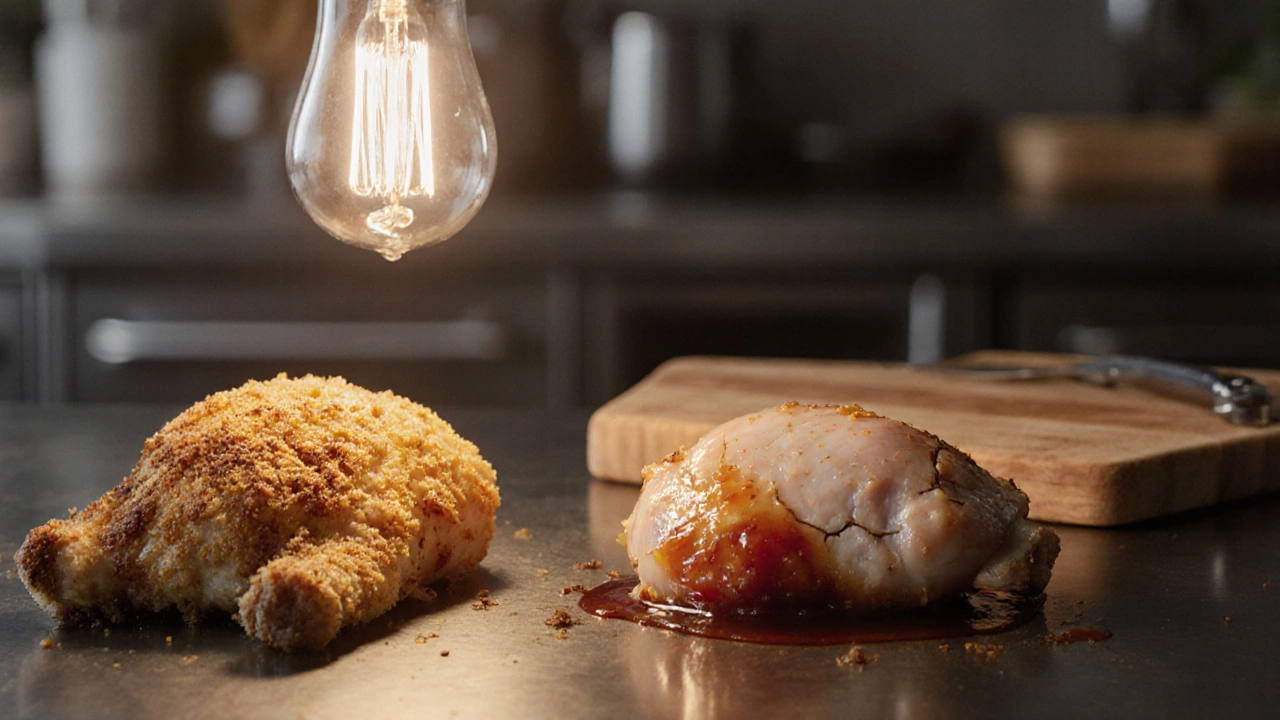Prevent Dry Chicken: Simple Ways to Keep Chicken Juicy
When working with prevent dry chicken, the goal is to keep the meat moist and tender throughout the cooking process. Also known as avoid dryness in chicken, it matters whether you’re baking, grilling, or frying because over‑cooking is the fastest route to a tough bite.
One of the biggest misconceptions is that higher heat automatically makes chicken dry. In reality, juicy chicken, comes from a balance of internal temperature, surface sear, and retained moisture. When you hit the right temp (165°F for safety) and stop right there, the fibers don’t have time to squeeze out all the juices. This is why a quick thermometer check beats guessing and why many chefs swear by a brief rest period before cutting.
How you actually cook the bird plays a huge role. roasting chicken, requires a dry heat environment that can easily over‑dry the meat if unattended. The trick is to start high to set a crisp skin, then lower the oven to finish cooking gently. Adding a pan of water or covering the bird loosely with foil for part of the time traps steam, which cushions the meat against harsh heat.
All of these methods revolve around one hidden factor: cooking moisture, the amount of liquid present inside and around the chicken during cooking. Whether it’s natural juice, a brine soak, or a splash of broth, that moisture acts like a mini‑baster, keeping the protein from drying out. Even a quick drizzle of olive oil before seasoning creates a barrier that slows evaporation.
Key Techniques to Keep Chicken Moist
First, consider a simple brine. Dissolve about a tablespoon of salt per cup of water, submerge the chicken for 30 minutes to a few hours, and rinse. The salt pulls in water and helps the fibers retain it when heat hits. Second, pat the skin dry and season with a little oil and spices; the oil helps conduct heat evenly while the spices add flavor without pulling moisture away.
Third, use a thermometer. A well‑calibrated probe lets you pull the chicken from the oven the instant it reaches 160‑162°F; it will finish cooking during the rest period and stay juicy. Fourth, add a pan of water or a splash of broth to the roasting tray. The steam lifts the meat’s surface temperature just enough to keep it from scorching, especially on the lower parts of the bird.
Finally, don’t skip the rest. Let the cooked chicken sit covered loosely with foil for 5‑10 minutes. The residual heat redistributes the juices, turning a potentially dry slice into a succulent bite. This simple step is why restaurants get away with cooking large roasts without drying them out.
With these ideas in mind, you’ll notice a big shift in how your chicken turns out. Below you’ll find a collection of recipes, step‑by‑step guides, and quick tips that put each of these principles into practice, so you can finally say goodbye to dry chicken for good.
How to Keep Oven-Baked Chicken Juicy Every Time


